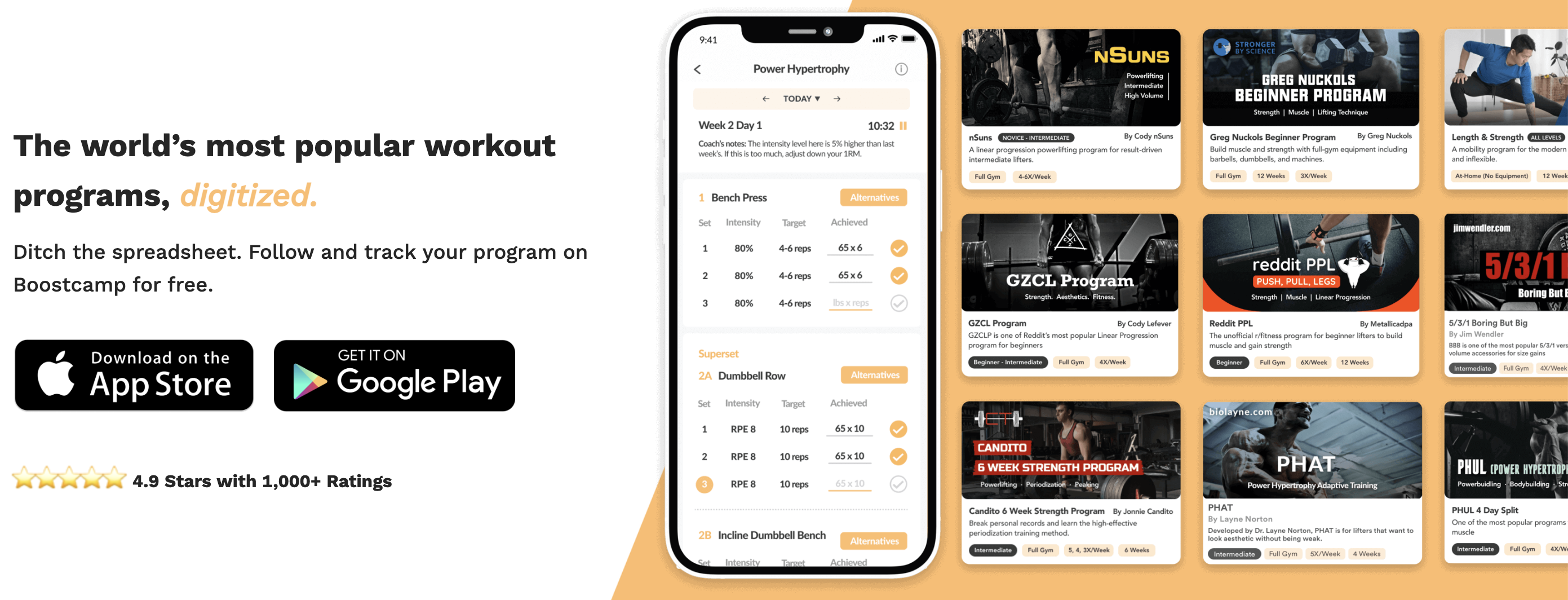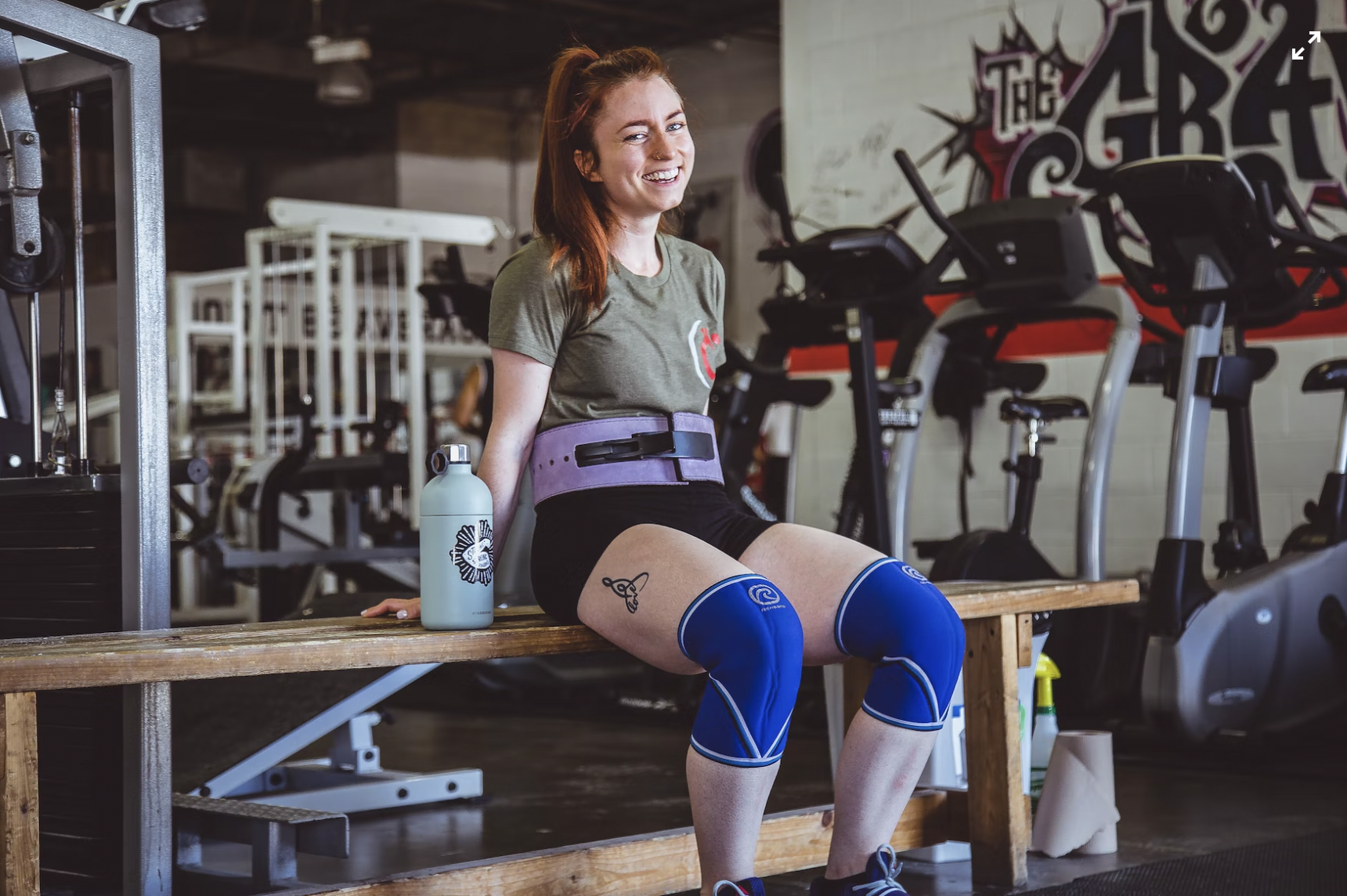A Beginner's Guide to Powerlifting Equipment
Written by The Boostcamp Editors
Get Started with Powerlifting Equipment: A Beginner's Guide
Starting the sport of powerlifting might seem daunting at first, as there is a lot that goes into it, but there is nothing to fear. This comprehensive guide will walk you through the powerlifting basics and get you started on the right track, so you'll be competing in no time. From understanding the essential terminology to exploring the equipment and techniques used in powerlifting, including your first lift, the squat, the barbell bench press, and the deadlift, as powerlifting gear. Whether you're setting up a garage gym or outfitting a commercial facility, you'll be well-equipped to make your mark in the world of strength sports.
So, buckle up and let's dive into the exciting realm of powerlifting and give your best effort in each of the competitive lifts to form your total score.
Table of Contents
Powerlifting Terminology
Powerlifting vs. Weightlifting vs. Bodybuilding
The Big Three
One-Rep Max (1RM)
Powerlifting Meet
Essential Equipment for Powerlifting
Barbell
Weight Plates
Squat Rack
Bench
Chalk
Powerlifting Techniques for Beginners
Squat Technique
Bench Press Technique
Deadlift Technique
Best Free Powerlifting Programs
r/Fitness Basic Beginner Routine
TSA Beginner Approach
5/3/1 for Beginners
FAQ: Questions from Beginner Powerlifters
Powerlifting vs. Weightlifting vs. Bodybuilding
Before delving into the specifics of powerlifting, it's essential to distinguish it from weightlifting. While both sports involve lifting weights, powerlifting focuses on three primary compound lifts: the squat, bench press, and deadlift.
In contrast, weightlifting emphasizes the snatch and the clean and jerk. In this guide, we'll concentrate on powerlifting techniques to help you master the three main lifts.
Bodybuilding is a sport that focuses on developing a muscular and aesthetic physique. While powerlifters will do bodybuilding exercises to build muscle, the main purpose of doing so is to help lift more weights for the big three lifts.
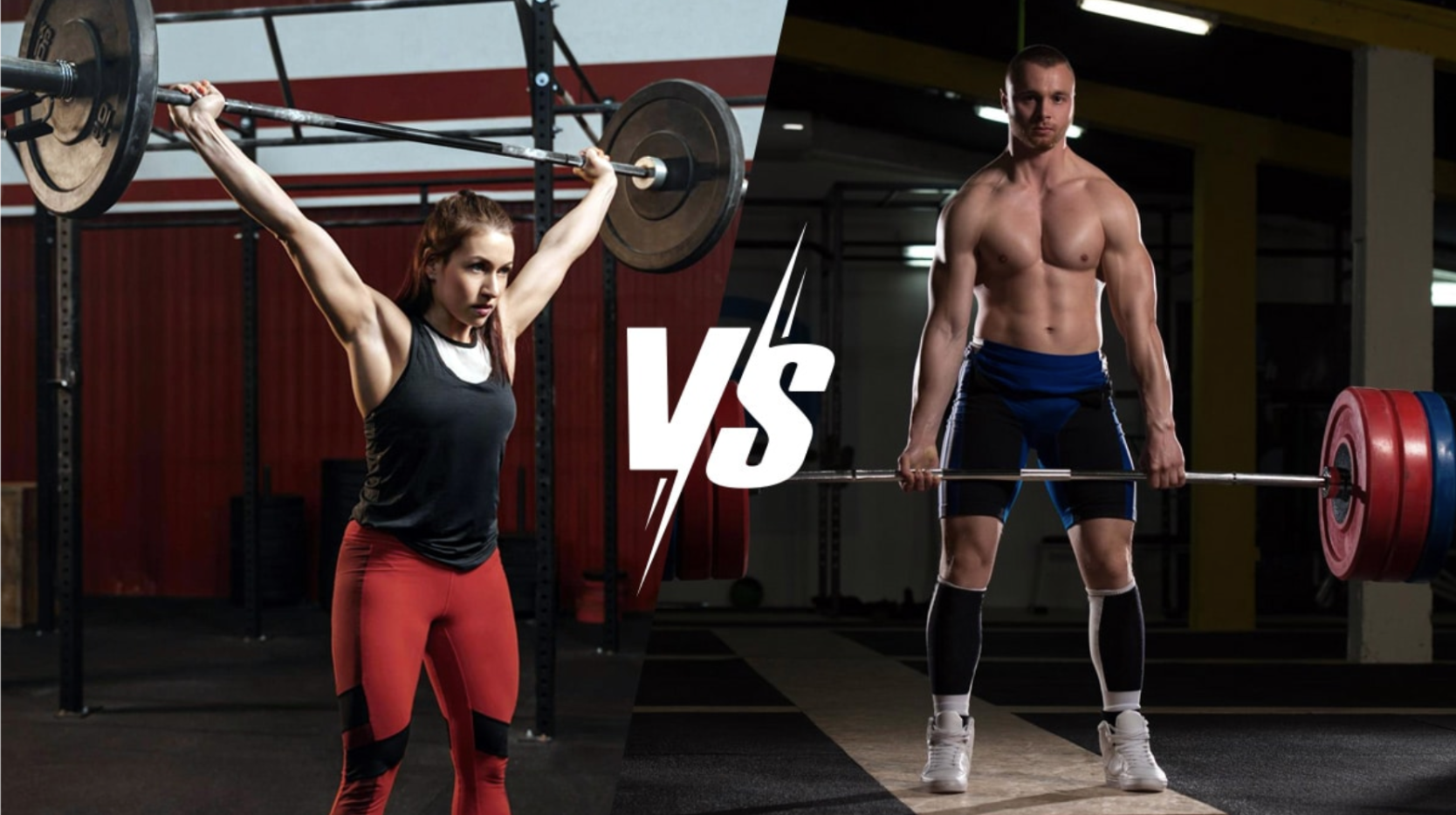
Weightlifting snatch (left) vs Powerlifting deadlift (right)
The Big Three
Powerlifting revolves around three fundamental exercises:
a) Squat: A lower body exercise that primarily targets your quadriceps, hamstrings, and glutes. The squat also engages your core and back muscles, making it an excellent full-body movement.
b) Bench Press: This upper body exercise primarily works your chest, shoulders, and triceps. The bench press is executed while lying on a bench and pressing a loaded barbell upwards.
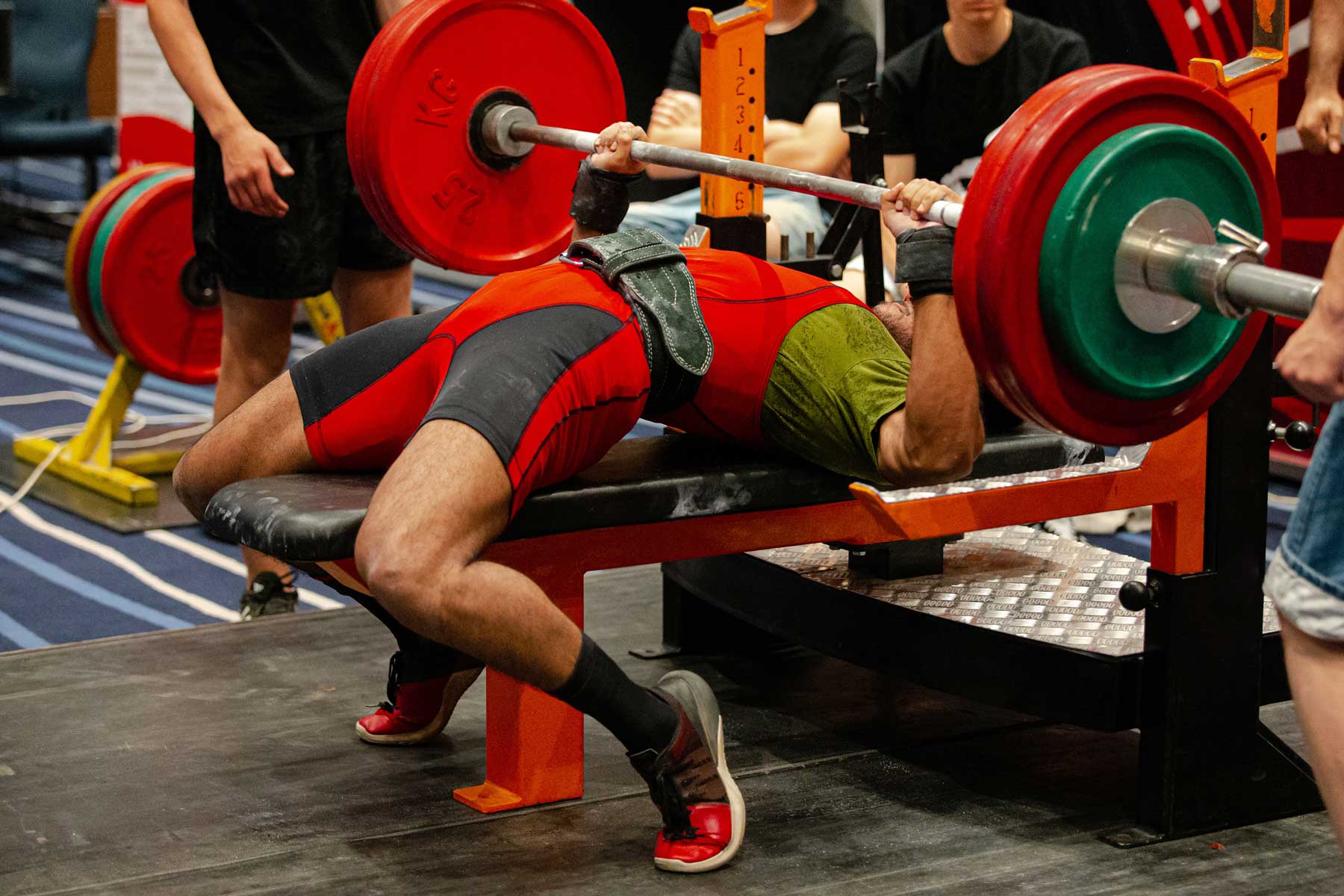
c) Deadlift: The ultimate test of overall strength, the deadlift targets your entire posterior chain, including your hamstrings, glutes, and lower back. This full-body exercise involves lifting a loaded barbell from the ground to a standing position.
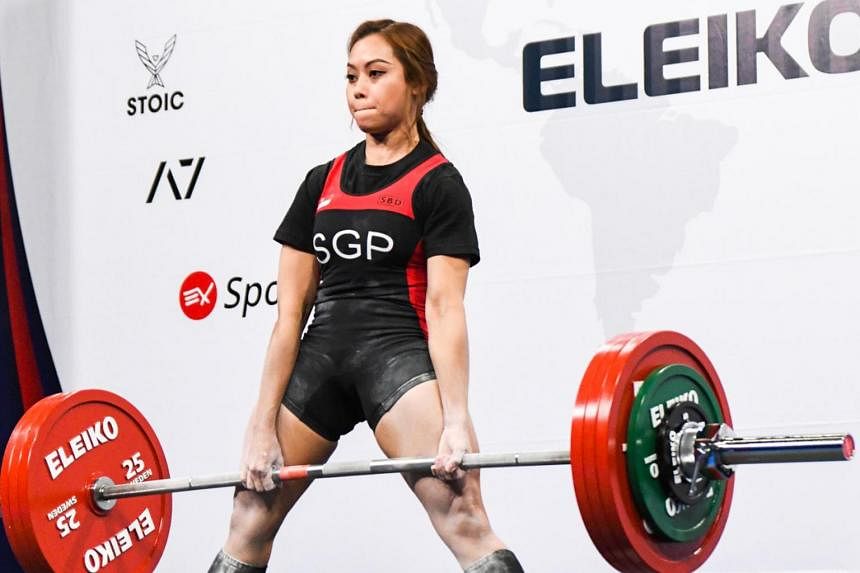
Note there are two types of deadlifts that are allowed in powerlifting competitions: conventional stance deadlifts and sumo stance deadlifts. The one you use depends on your leverage, muscular strength, and personal preference.
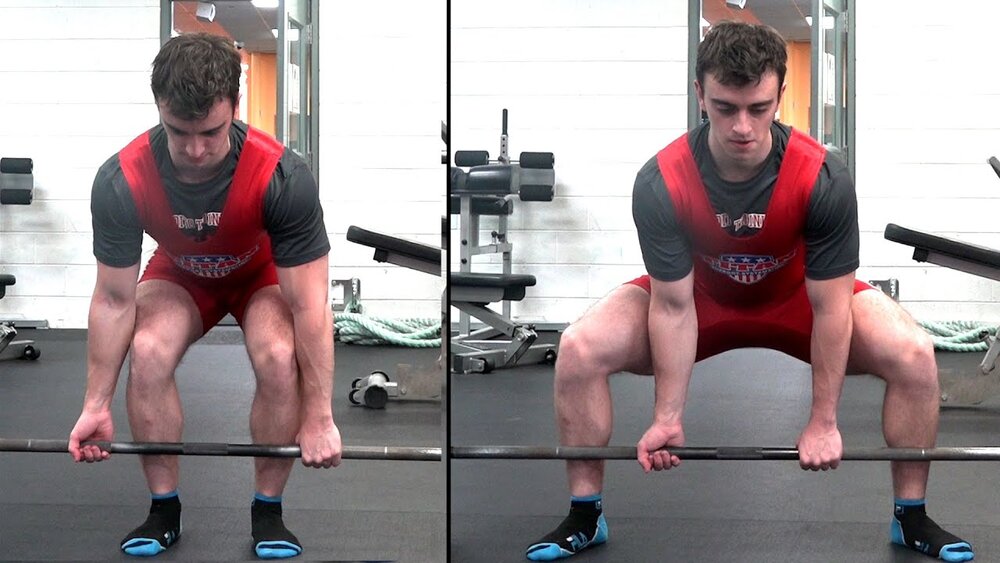
Sumo deadlift (left) vs conventional deadlift (right)
One-Rep Max (1RM)
Your one-rep max refers to the maximum amount of weight you can lift for a single repetition of a given exercise. Powerlifters use their 1RM to determine training weights and track progress.
Many powerlifting programs are based on weights and reps that are determined by your current 1RM. For example, a workout might ask you to lift 65% of 1RM for 5 reps on the bench press.
You can find many free and proven powerlifting routines on Boostcamp App, such as Candito 6-Week Strength, TSA Beginner Approach, Wendler 5/3/1, and more. You can also easily create your own custom programs and log your training.
Powerlifting Meet
A powerlifting meet is a competition where athletes showcase their strength in the squat, bench press, and deadlift. Competitors perform three attempts at each lift, and the highest successful attempt for each lift is combined to calculate a total. The lifter with the highest total in their weight class wins the competition.
Powerlifting competition example:
Squat: 315 lbs, 335 lbs, 350 lbs
Bench Press: 205 lbs, 225 lbs, 250 lbs (Fail)
Deadlift: 405 lbs, 425 lbs (Fail), 425 lbs
Total: 350 + 225 + 425 = 1,000 lbs
There are different divisions based on age, sex, and weight classes. Each federation and powerlifting meet might have slightly different criteria, so be sure to check if you’re planning to compete soon.
Essential Equipment for Powerlifting
Barbell
The barbell, also known as a power bar, is the foundation of powerlifting, as it's the primary tool used for the big three exercises. A standard powerlifting barbell is approximately 7.2 feet long and weighs 45 pounds (20 kilograms). You can use the barbell to perform the squat, bench, deadlift, and many accessory movements for your home gym, making it an essential piece of equipment for strength athletes looking to improve their performance and build balanced Olympic strength development in different styles. This includes variations such as Olympic, T-bars/Hex-bars, and thick handled barbells.

Deadlift Barbell
The deadlift barbell, also known as the deadlift exercise bar, is not a necessary piece of equipment to have in your gym, but is commonly used in competitions. The deadlift barbell is a specialized barbell that is a bit more narrow in diameter, slightly longer, and provides more flex towards the center than a traditional barbell. This makes the deadlift training cycle slightly easier to break off the floor as compared to regular barbells. Deadlift socks and a deadlift suit are also recommended to protect the lower leg from the knurling on the bar and provide support for the hips, respectively. Again, these are nice-to-haves, but not must-haves, for your powerlifting training.
Weight Plates
Weight plates are added to the barbell to increase resistance, similar to how they are used in strongman competitions. They come in various sizes and weights, ranging from 2.5 pounds (1.1 kilograms) to 45 pounds (20 kilograms). There are different types of plates as well, from metal plates, to rubber plates, bumper plates, and iron plates, making them essential for powerlifting workouts. Powerlifting competitions primarily use calibrated metal plates (Eleiko or Rogue brands) made of 1 or 2 layers of polyester or denim to ensure standardization and promote hypertrophy.
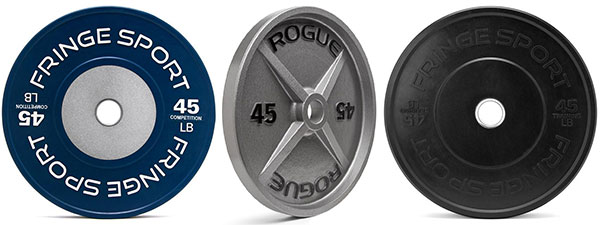
Squat Rack
A squat rack or power rack, also known as gym equipment, is an essential piece of equipment for safely performing squats, deadlifting, and other powerlifting exercises. It allows you to set the squat bar at the appropriate height for unracking and re-racking, and it usually includes safety bars to catch the weight if you fail a lift. The squat suit rack is versatile and can be used for a variety of exercises, including the squatting exercise. You may also set up a squat rack to use as a bench press rack.
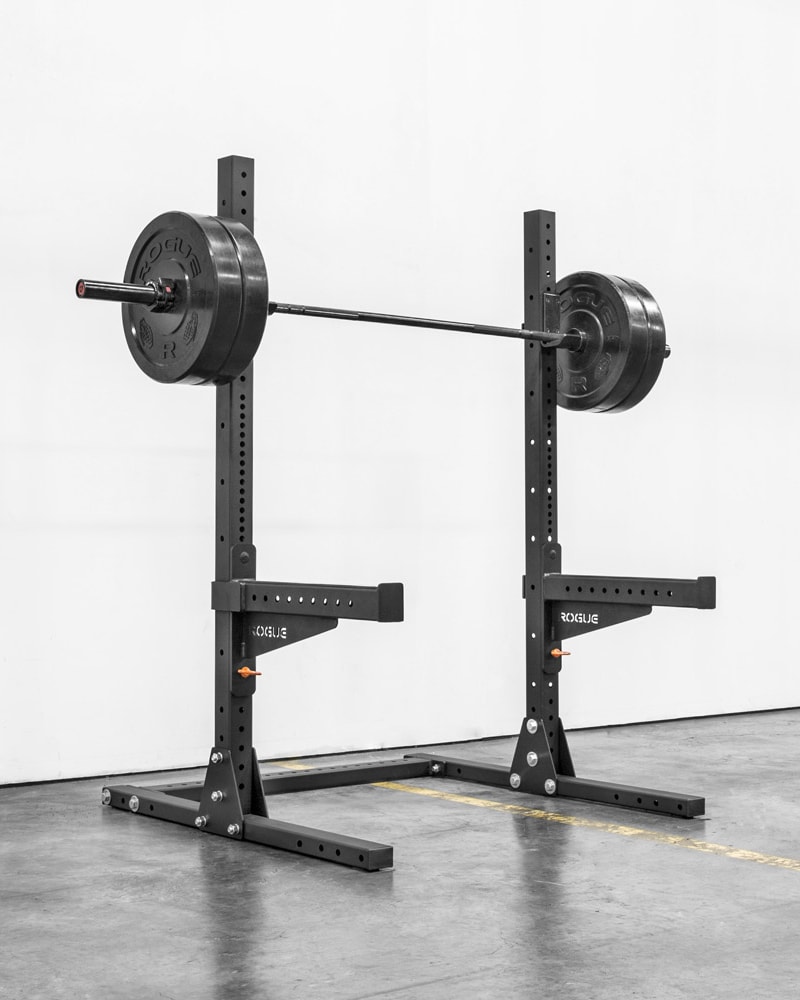
Bench
A sturdy, flat bench is required for the bench press. Some powerlifting gyms also offer adjustable benches that can be set at different inclines for accessory exercises.
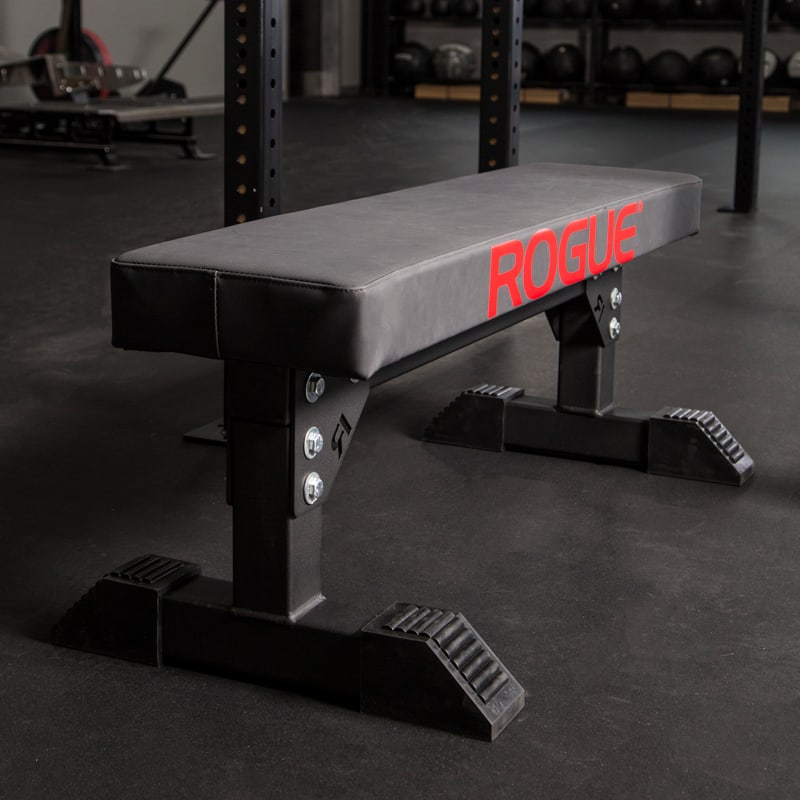
Lifting Belt
A lifting belt is a popular accessory among powerlifters. It provides additional support for your core and lower back during heavy lifts, potentially reducing the risk of injury and increasing performance. While not mandatory, a belt can be a valuable tool as you progress in your powerlifting journey.

Lifting Shoes
Specialized powerlifting shoes offer a stable, flat surface for your feet, enhancing your balance and force transfer during lifts. Many powerlifters use Chuck Taylors Converse as the best bang for your buck. Avoid shoes with a lot of cushion like Yeezy’s.
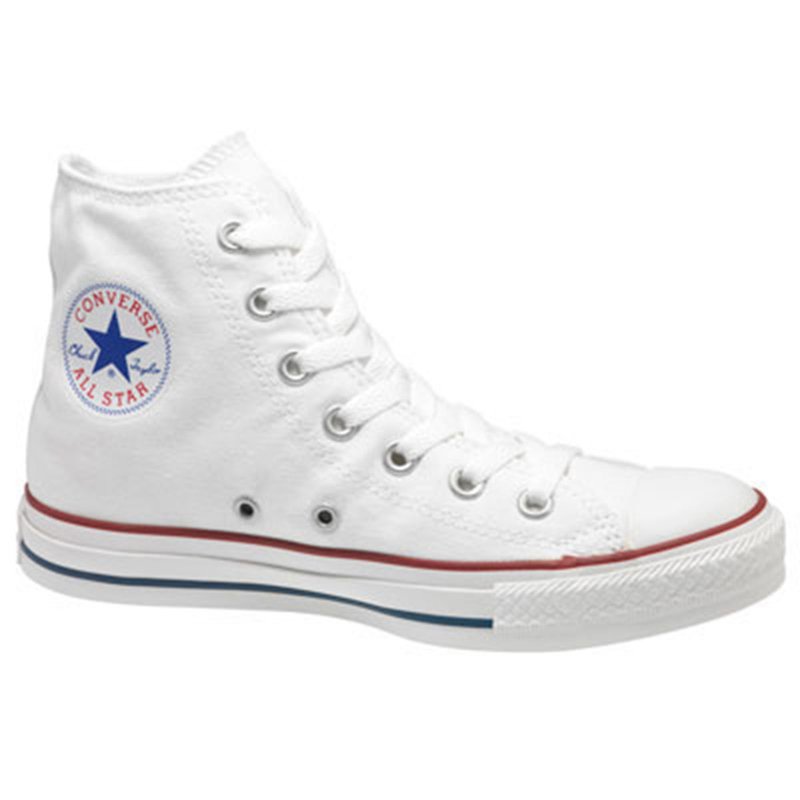
Chalk
Chalk helps improve your grip on the barbell by reducing moisture and friction. It is especially useful during heavy deadlifts, where maintaining a secure grip is crucial.
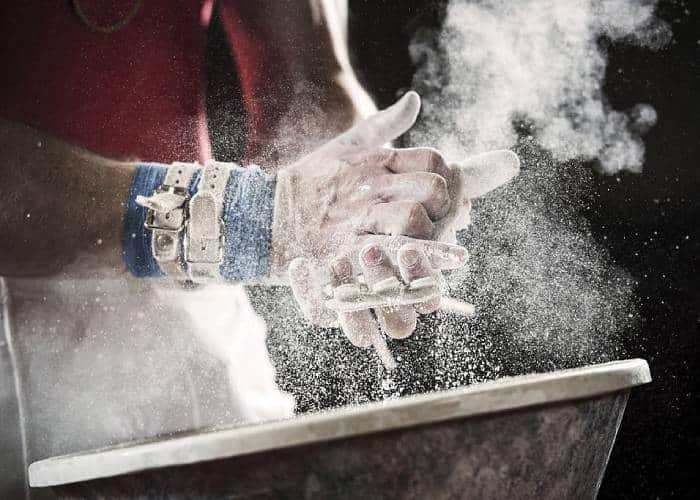
Supportive Gear (Optional)
Some powerlifters choose to fill their gym bags with supportive gear like knee sleeves, wrist wraps, and lifting straps. While not necessary for beginners, these accessories can provide additional support and stability as you progress in your training.

Powerlifting Techniques
Squat Technique
A) Setup: Begin by setting the barbell at chest height in the squat rack. Step under the bar and position it on your upper back, either in a high-bar or low-bar position, depending on your preference. Grip the bar with your hands slightly wider than shoulder-width apart. Stand up to unrack the bar and take a few steps back, positioning your feet shoulder-width apart with your toes pointing slightly outward. Maintain an upright posture throughout the movement to ensure proper form and maximize the activation of your leg muscles and inner strength. Make sure to create a break in the hips and bend your knees as you drop into a squatting position, with the hip crease below the top of the knee. If getting low enough – so your thighs are at least parallel to the floor – is an issue, I advise doing pause squats alongside a regular mobility routine. Pausing at the bottom will gradually release tightness, build strength in the new found range, and give you better awareness of what the correct position is.
B) Descent: Take a deep breath, brace your core, and initiate the squat by pushing your hips back and bending your knees. Keep your chest up and your back straight as you descend. Aim to squat to a depth where your hips are below your knees (known as "breaking parallel").
C) Ascent: Drive through your heels and push your hips forward to return to a standing position. Exhale at the top of the movement, and make sure to fully extend your hips and knees.
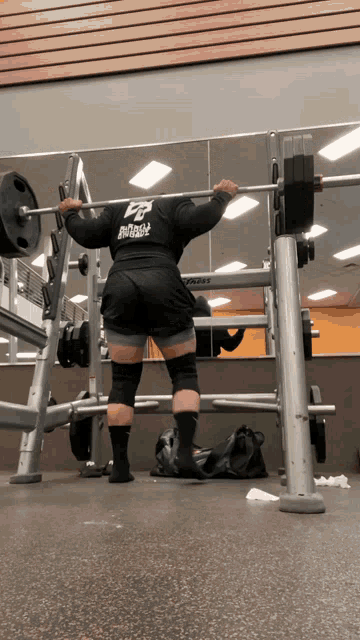
Bench Press Technique
a) Setup: Lie down on the bench, positioning your eyes directly under the bar. Plant your feet firmly on the ground, and maintain a slight arch in your lower back. Grip the bar with your hands slightly wider than shoulder-width apart.
b) Descent: Unrack the bar with the help of a spotter or by yourself, and lower it to your chest in a controlled manner. Keep your elbows tucked in at approximately a 45-degree angle from your body.
c) Ascent: Press the bar upwards, locking your elbows out at the top of the movement. Ensure that the bar travels in a straight vertical line.
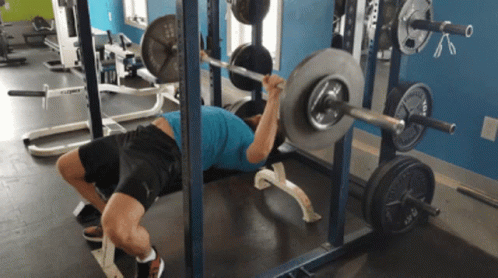
Deadlift Technique
a) Setup: Stand with your feet hip-width apart, and position the barbell over the middle of your feet. Bend at your hips and knees to lower yourself to the bar. Grip the bar with either a double overhand grip or a mixed grip (one hand overhand, one hand underhand).
b) Pull: Take a deep breath, brace your core, and engage your lats by pulling your shoulder blades together. Begin the lift by pushing through your heels and extending your knees and hips simultaneously. Keep the bar close to your body throughout the entire movement.
c) Lockout: Once the barbell passes your knees, fully extend your hips and stand tall. To complete the lift, lower the bar back to the ground in a controlled manner, maintaining a neutral spine.

Beginner Powerlifting Programs
Now that you understand the basics of powerlifting, the most important thing is to find a proven powerlifting routine to follow so that you learn proper technique, sound progression principles, and get strong. The last thing you want to do is spin your wheels and make no progress.
Here are five beginner powerlifting programs that you can access for free:
TSA Beginner Approach: Developed by world champion & powerlifting coach Bryce Lewis, this program offers a version for both men and women. The program introduces a wave progression method, where you progress through weekly increases in volume and intensity, then culminating to a peak for PR testing.
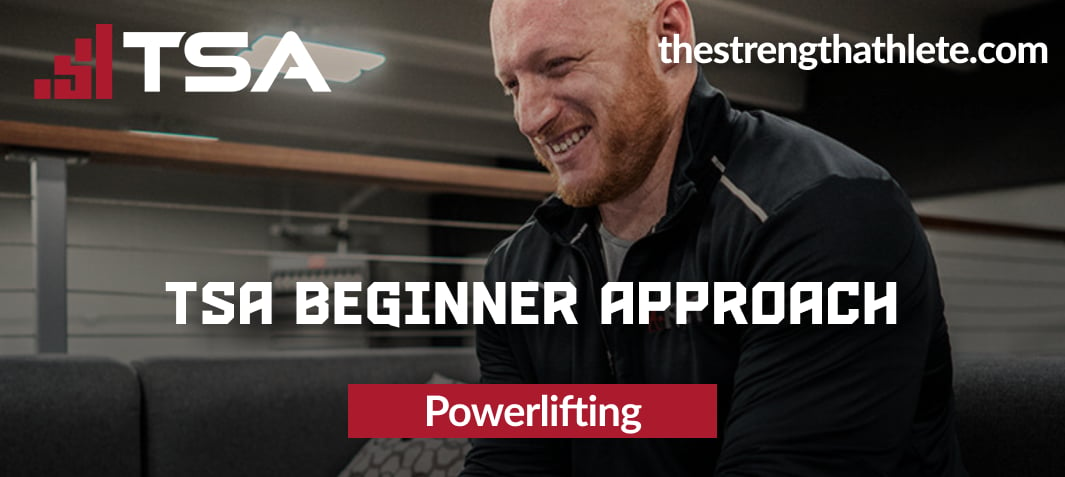
GZCL Program: Designed by Cody Lefever (GZCL), this is a popular linear progression program for beginner and novice lifters who want to build both strength and size. There is plenty of barbell squat, bench, deadlifts, as well as bodybuilding accessories. It is a highly popular alternative to Starting Strength and Stronglifts due to its effectiveness and flexible structure.
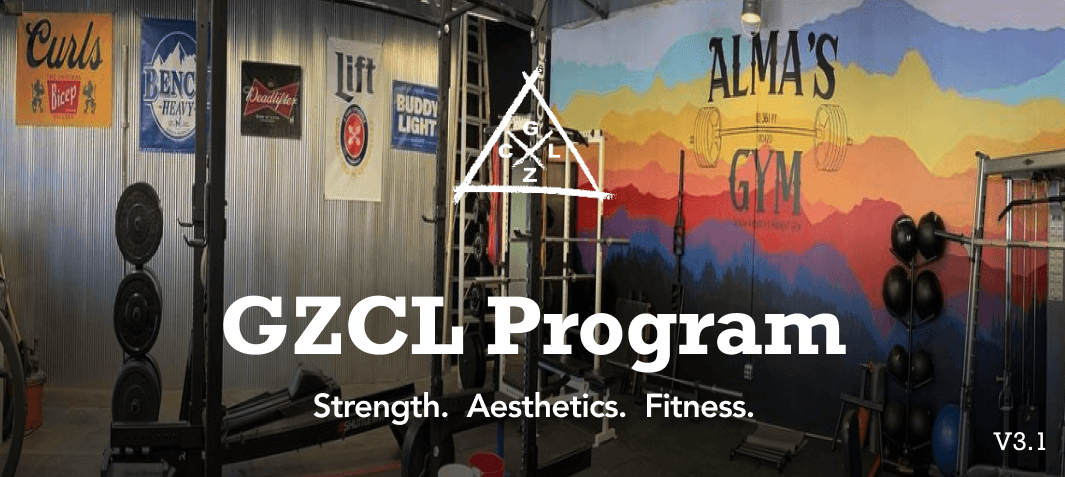
5/3/1 for Beginners: Designed by Jim Wendler, 5/3/1 for Beginners is a popular variation of the 5/3/1 training methodology for beginners and novice lifters to dramatically increase their strength on the squat, bench, deadlift, and overhead press. It runs on 3 week wave cycles so it keeps things interesting every week.
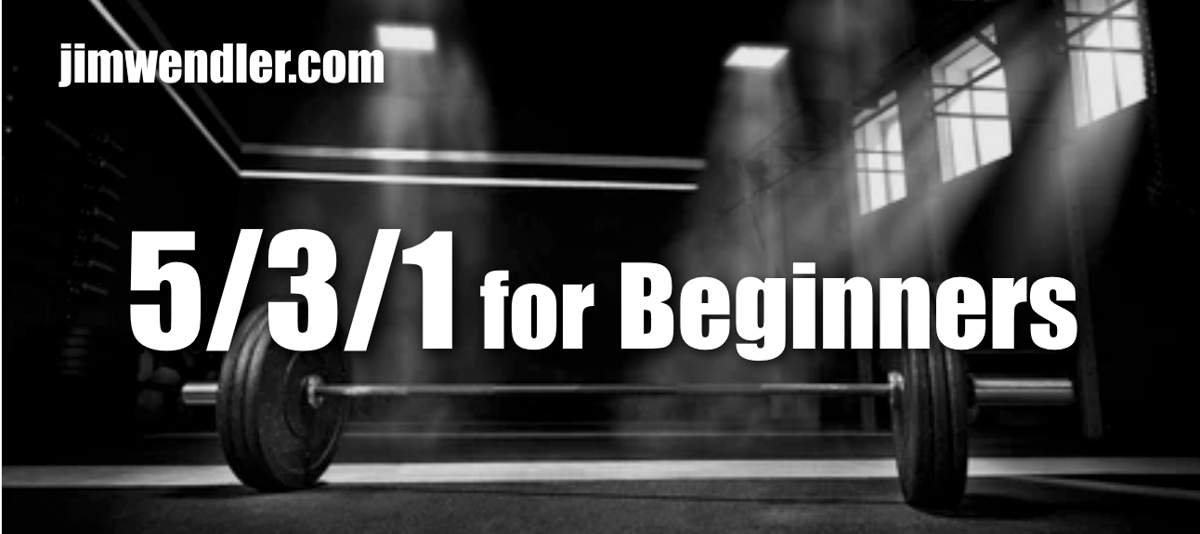
r/Fitness Basic Beginner: Created by the Reddit r/fitness community, this is a 3x5 program for novices that emphasizes the squat, bench press, deadlift, overhead press, and barbell row. The program consists of two alternating workouts, with each exercise performed for three sets of five repetitions.
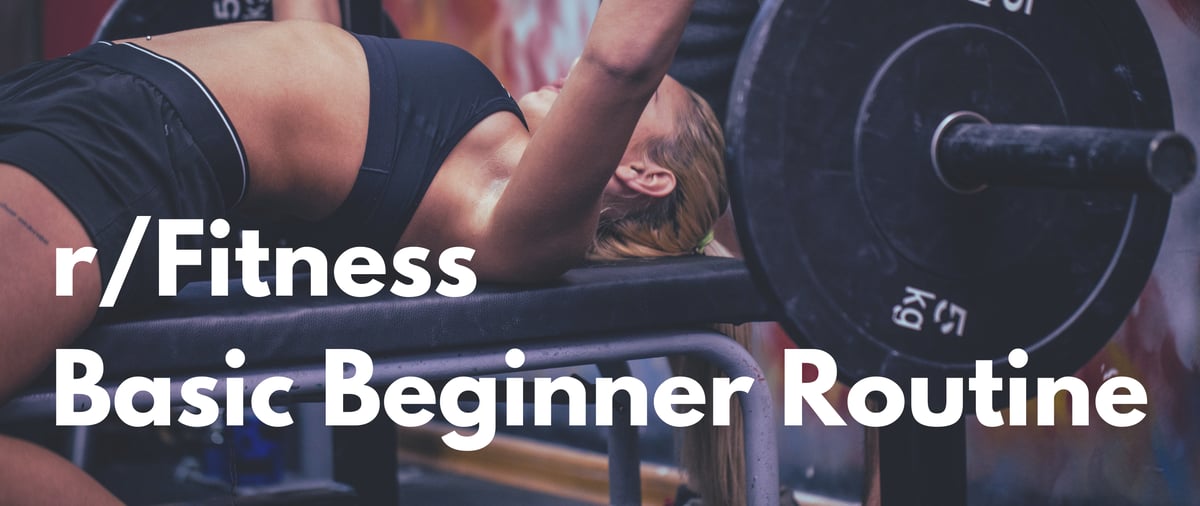
Greyskull LP: If you are completely new to the gym and you’re intimidated by free weight barbell exercises, check out this beginner program by the awesome Greg Nuckols. This program will help you build a baseline level of strength and muscle to help you prepare for barbell exercises.

All these programs and more are available for free on Boostcam App, the lasting lifting app you’ll ever need.
FAQ
How often should I train as a beginner powerlifter?
As a beginner, it's generally recommended to train three to four times per week, focusing on the primary powerlifting exercises (squat, bench press, and deadlift). This frequency allows for adequate recovery while still providing enough stimulus for strength gains.
Can I do powerlifting and cardio workouts in the same week?
Yes, you can combine powerlifting and cardio workouts. However, it's crucial to balance the two to ensure proper recovery and avoid overtraining. Consider performing low-impact cardio exercises, such as cycling or swimming, on your non-lifting days to minimize interference with your strength gains.
What’s the difference between powerlifting and strength training?
The primary goal of powerlifting is to maximize the amount of weight lifted in three specific exercises: the squat, bench shirt, and deadlift. Strength training encompasses powerlifting, but is more generalized in that it typically involves a wider range of exercises, targeting multiple muscle groups and using various types of equipment (dumbbells, barbells, wrist wraps with nylon and elastic material, machines, resistance bands, etc.) to support the wrist joints.
How long does it take to see progress in powerlifting?
Progress varies depending on factors such as your starting point, training consistency, nutrition, and recovery. As a beginner, you may see noticeable strength gains within the first few weeks, but it's essential to be patient and focus on long-term progress.
Should I use a lifting belt as a beginner?
While lifting belts can provide additional support during heavy lifts, beginners should focus on developing proper form and building a strong core before relying on a belt. Once you become more comfortable with the main lifts and start lifting heavier weights, you may consider incorporating a belt into your training.
How important is nutrition for powerlifting?
Nutrition plays a crucial role in your powerlifting progress. Consuming an adequate amount of calories, protein, carbohydrates, and fats will fuel your workouts, support muscle growth, and aid in recovery. As a beginner, it's important to focus on a well-rounded, balanced diet to support your training goals.
Can I powerlift if I'm older or have never exercised before?
Yes, powerlifting can be an excellent form of exercise for people of all ages and fitness levels. However, it's essential to consult with a healthcare professional before starting any new exercise program, especially if you have pre-existing conditions or concerns. Begin with light weights and focus on proper form to minimize the risk of injury.
How do I know when to increase the weight on my lifts?
As a beginner, you should aim for linear progression, gradually increasing the weight on your lifts over time. When you can complete all sets and repetitions with proper form, consider adding 5-10 pounds (2.5-5 kilograms) to your squat and deadlift and 2.5-5 pounds (1-2.5 kilograms) to your bench press for the next workout.
How much rest should I take between sets?
The optimal rest period between sets varies depending on the intensity of the exercise and your training goals. For heavy compound lifts like the squat, bench press, and deadlift, it's generally recommended to rest for 3-5 minutes between sets. This allows for adequate recovery and helps maintain proper form during your lifts. For lighter accessory exercises, a shorter rest period of 1-2 minutes may be sufficient.
What are some common powerlifting mistakes to avoid?
Some common powerlifting mistakes include:
Neglecting proper form: Prioritize learning and maintaining proper technique to minimize the risk of injury and maximize your strength gains.
Not warming up: A thorough warm-up prepares your body for the intense lifting ahead and helps reduce the risk of injury.
Progressing too quickly: Avoid the temptation to increase weights too rapidly. Focus on gradual progression to build a solid foundation and avoid setbacks from injuries or overtraining.
Ignoring accessory exercises: While the main lifts are crucial, don't neglect accessory exercises that help build overall strength, address imbalances, and prevent injuries.
Inadequate recovery: Ensure you're getting enough sleep, eating well, and managing stress to support optimal recovery and progress in your powerlifting journey.
How can I stay motivated and consistent in my powerlifting journey?
Here are some tips to help you stay motivated and consistent:
Set realistic goals: Establish short-term and long-term goals that are achievable and specific to your powerlifting journey.
Track your progress: Keep a training log (free on Boostcamp App!) to monitor your workouts, lifts, and personal records. This will help you see improvements over time and maintain motivation.
Find a training partner or community: Having someone to share your journey with can provide accountability, support, and camaraderie, making the process more enjoyable and motivating.
Celebrate your achievements: Acknowledge your accomplishments, both big and small, and take pride in your progress.
Be patient: Powerlifting is a long-term endeavor, and progress takes time. Embrace the process and stay consistent with your training, nutrition, and recovery.
Wrap Up
Powerlifting for beginners may seem challenging at first, but with the right guidance and dedication, you'll quickly build a solid foundation. By understanding the basic terminology, getting the essential equipment, including athletic shoes and a lever belt, mastering the powerlifting techniques, and following a good powerlifting program, you'll be well on your way to unlocking your true strength potential. Remember, consistency is key, so stay committed to your training and enjoy the rewards of your hard work!
Remember that everyone's powerlifting journey is unique, and what works for one person may not necessarily work for another. Stay open to learning, experimenting, and adjusting your approach as needed to find what works best for you.
Also, be sure to follow Boostcamp on Instagram and subscribe on YouTube!
